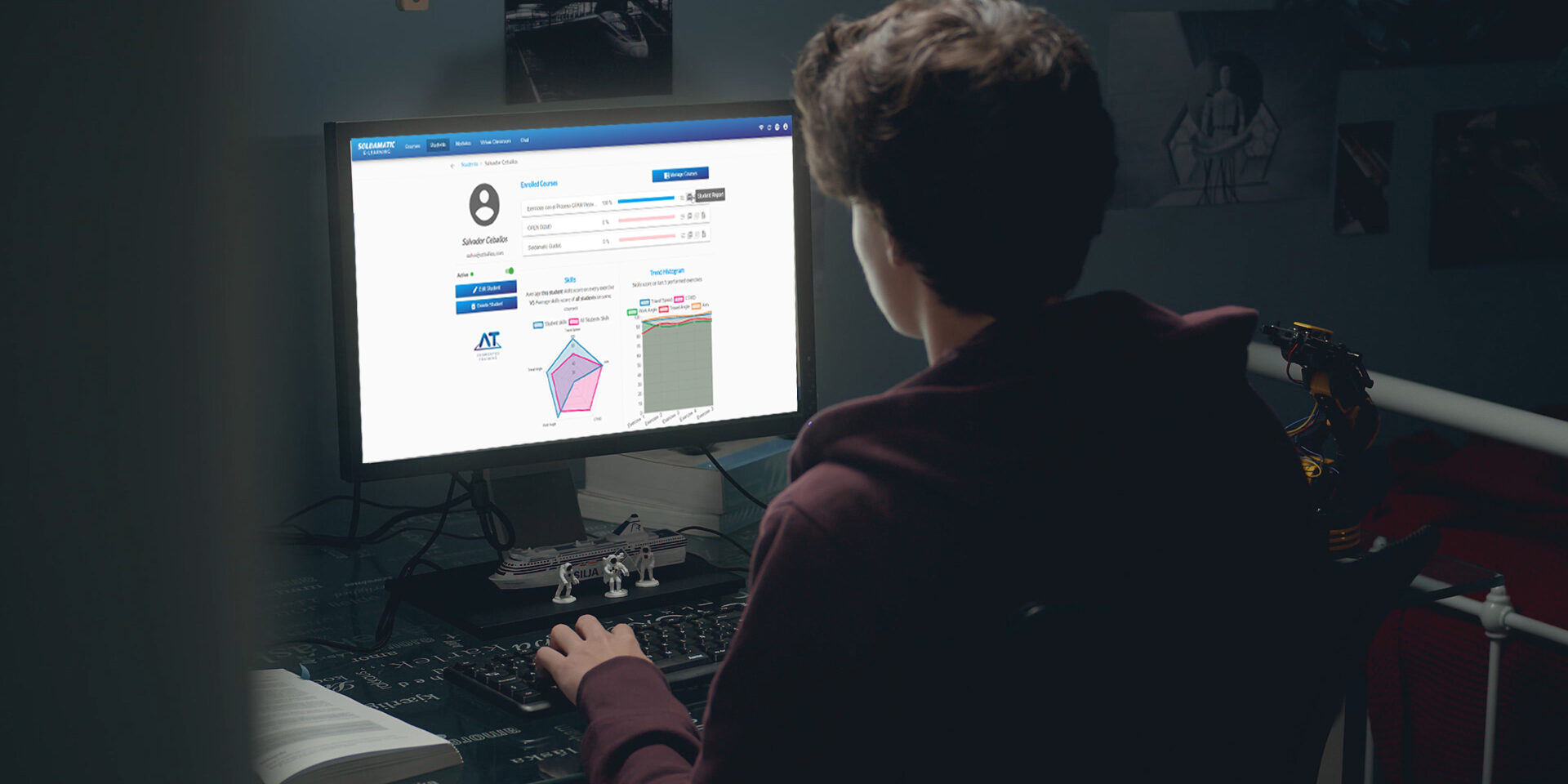The UK has had a housing issue for years, with the region reporting a backlog of 4.3 million missing homes when compared to the typical European nation. This is largely driven by a lack of skilled workers, with welders included within this number.
Of course, the shortage of qualified welders is also a global issue, and one that’s impacting everywhere from the US to Australia.In America alone, it’s projected that more than 375,000 welding professionals will be required to fill job openings by the end 2023, while Australia also needs qualified welders and similarly skilled individuals to facilitate growth in numerous industries.
A crucial element to solving this complex puzzle lies in training, and the introduction of e-learning and augmented training solutions. But how can such technology help to revolutionise the welding industry, and what role will Soldamatic play in this journey?
How Can Augmented Training Solutions Tackle the Issue?
In addition to a global shortage of welders, we can also see that existing training methodology will struggle to produce skilled workers at the requisite rate in the coming years. E-learning and Soldamatic’s augmented training solution can help in both respects, primarily by engaging a new generation of workers and connecting them to highly immersive learning techniques. Of course, e-learning is also incredibly accessible and flexible, so it has the potential to reach as large an audience as possible. Make no mistake; individuals can also learn regardless of their geographical location, optimising the number of qualified and certified welders in every part of the world.
On the topic of certified welders, Solamatic’s augmented reality-based training solution has a proven track record of boosting efficiency. More specifically, it produces approximately 34% more welders than traditional methodology, creating a significantly better return on investment in the process.Even more importantly, Soldamatic’s solutions drive a huge 56% reduction in learning time. This means that a larger number of students can be trained within any given period of time, ensuring that more global job vacancies are filled without compromising on worker competency or efficiency.
How Does Soldamatic’s Augmented Training Solution Work?
Soldamatic combines advanced augmented reality training methodologies with e-learning principles, creating immersive and highly effective learning experiences that can be accessed in a completely dynamic and flexible way. Designed by Seabery, Soldamatic’s e-learning feature is a comprehensive Learning Management System app for the enrollment, management and development of courses.
This can be accessed both online through a web browser or a dedicated desktop app, depending on which solution suits you better. The combination of augmented reality learning (which makes use of corporeal equipment and materials within a completely safe environment) and e-learning certainly creates a revolutionary training program, and one that’s capable of delivering superior results and student insights in real-time.
How Exactly is Soldamatic’s E-Learning Revolutionising Welding Training?
Now that you have a broad understanding of how Soldamatic’s training solutions work and their broad benefits, it’s important to appraise the precise advantages that they deliver to teachers and students alike. These include:
#1. Creating Content for Your Course
As a welding teacher, the Soldamatic program affords you some control over the content of your course and precisely what you teach students. More specifically, you can create practical and theoretical content that runs throughout the duration of the course, which can be combined with predefined documents in different languages from certified welding societies such as AWS, DVS and CESOL.
This flexibility lends itself to the development of bespoke courses, which are tailored to suit the individual needs of students and different learning needs. By inputting content in different languages, you can also reach out to a global audience of aspiring welders at any given time.
#2. Registering and Managing Students Seamlessly
Registering students is easy with Soldametic’s training solutions, as you simply enter their unique contact details and create immediately accessible and customised profiles.
This creates a parallel platform that students can access directly, enabling them to track their own learning progress and review uploaded content. This also makes it easier to lead a virtual classroom and any given time and manage individual student’s progress, while uploading detailed insights into their results and identifying specific areas for improvement. This content can include an interactive graph that charts the evolution and development of each student, which is accessible to all participating parties and can be taken into account when setting assignments and exams.
#3. Allowing for Real-Time Interaction Between Teacher and Students
E-learning effectively takes place in an interactive, virtual classroom, and one that allows teachers to watch students’ execution of specific tasks in real-time. Such content can also be recorded for future review or shared live, enabling more in-depth analysis of performance.
This is a great way of monitoring progress and highlighting specific issues that students may be facing during the course, while it definitely gives you greater insight into each individual’s unique rhythm and methods of learning. Soldamatic’s learning solutions also feature a chat section, which enables continuous interaction during lessons. In addition to interacting with students live and on an individual basis, teachers can also broadcast pre-recorded messages outside of lesson times and even if there’s no active Internet connection.
So, there you have it; a breakdown of how Soldamatic’s augmented reality and e-learning training solutions can help to revolutionise welding training. There’s no doubt that such programs are well-placed to solve the global shortage of welders, while ensuring that job vacancies are filled at the necessary rate going forward.
